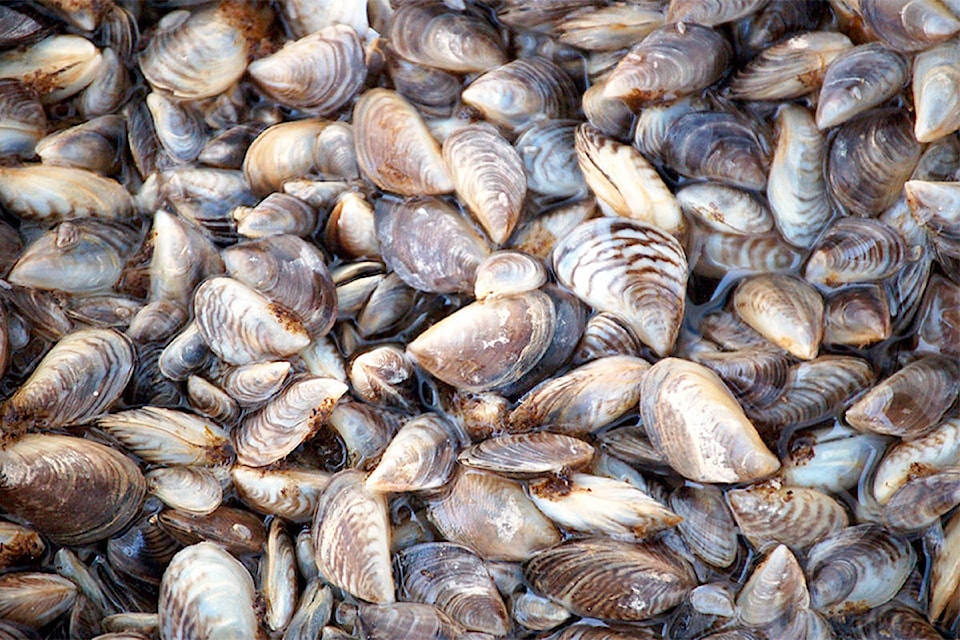Grant funding has come in for a regional conservation organization dedicated to mitigating invasive species across the East Kootenay.
The East Kootenay Invasive Species Council will be sampling more than 10 lakes in the region for the presence of Zebra and Quagga mussels, thanks to $17,305 in funding from the Habitat Conservation Trust Foundation in partnership with the Ministry of Environment and Climate Change Strategy.
Lakes included in the project are Tie, Windermere, Koocanusa, Premier, Wasa, Whitetail, Whiteswan, Columbia, Moyie, St Mary, Surveyor’s and Lillian.
Zebra and Quagga mussels were introduced to eastern parts of North America in the 1980s, and have steadily moved west into Manitoba and Montana in the United States. The mussels are a serious threat to aquatic ecosystems, impacting native plants and wildlife, degrade water quality and clog piping for hydro power facilities and municipal infrastructure, according to the provincial government.
“Recreationists have a huge responsibility on their shoulders,” said Jessie Paloposki, Education and Communications Manager for the East Kootenay Invasive Species Council (EKISC). “To continue enjoying the rivers and lakes as we do, we have to ensure we’re not cross-contaminating the water as we move from one lake or river to another. Mussel larvae is microscopic, so the only way we can confirm they’re not hitch-hiking on our gear or watercraft is to ensure that we clean, drain, and dry this equipment before moving to another waterbody.”
For the project, the EKISPC will carry out plankton tow sampling by using the British Columbia Dreissenid Mussel Lake Monitoring Field Protocol.
The samples are sent to a designated lab by the Ministry of Environment and Climate Change Strategy to check for the presence of veligers, the microscopic free-swimming stage of the mussels’ larva. Sampling is done by using a cone-shaped fine-mesh net. Sampling is usually done between May and October around boat launches, marinas and docks, as the invaders can spread through water-based recreation activities.
This grant was one of 12 awarded by the Habitat Conservation trust Foundation for invasive mussel early detection monitoring in 2019 after a thorough technical evaluation. The grants are part of a record $9 million in funding for 170 conservation projects announced by the Foundation earlier this year.
trevor.crawley@cranbrooktownsman.com
Like us on Facebook and follow us on Twitter
